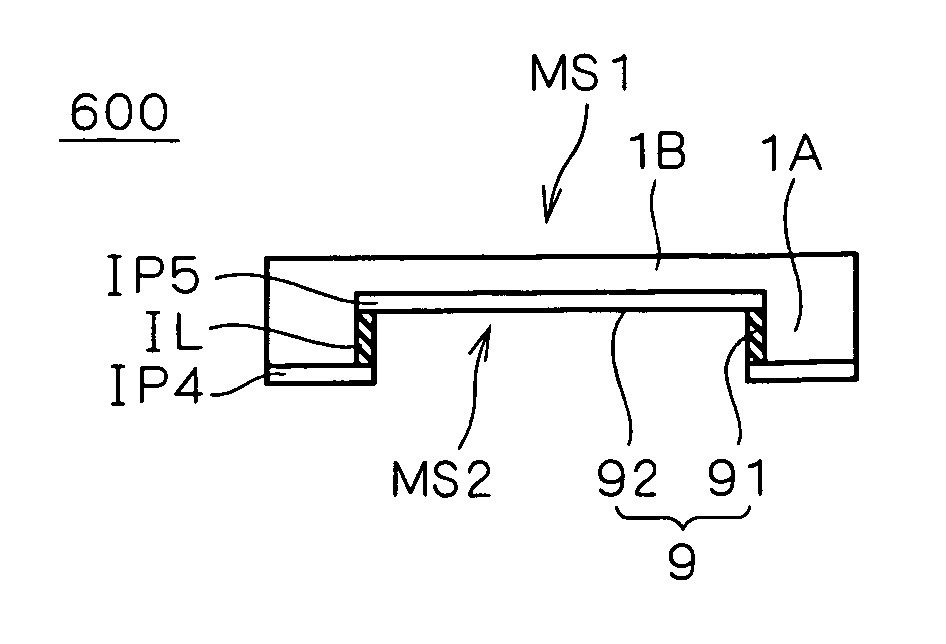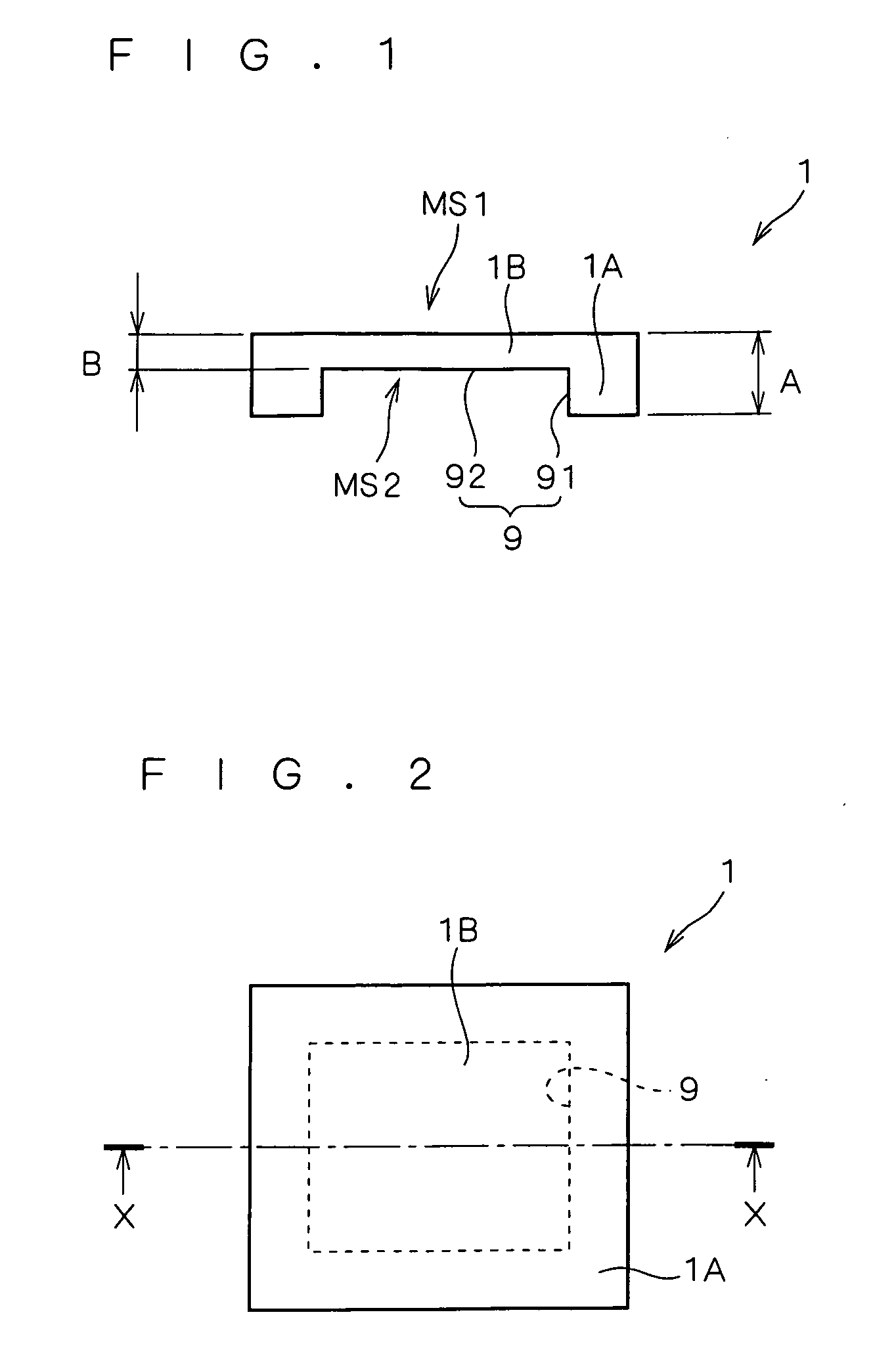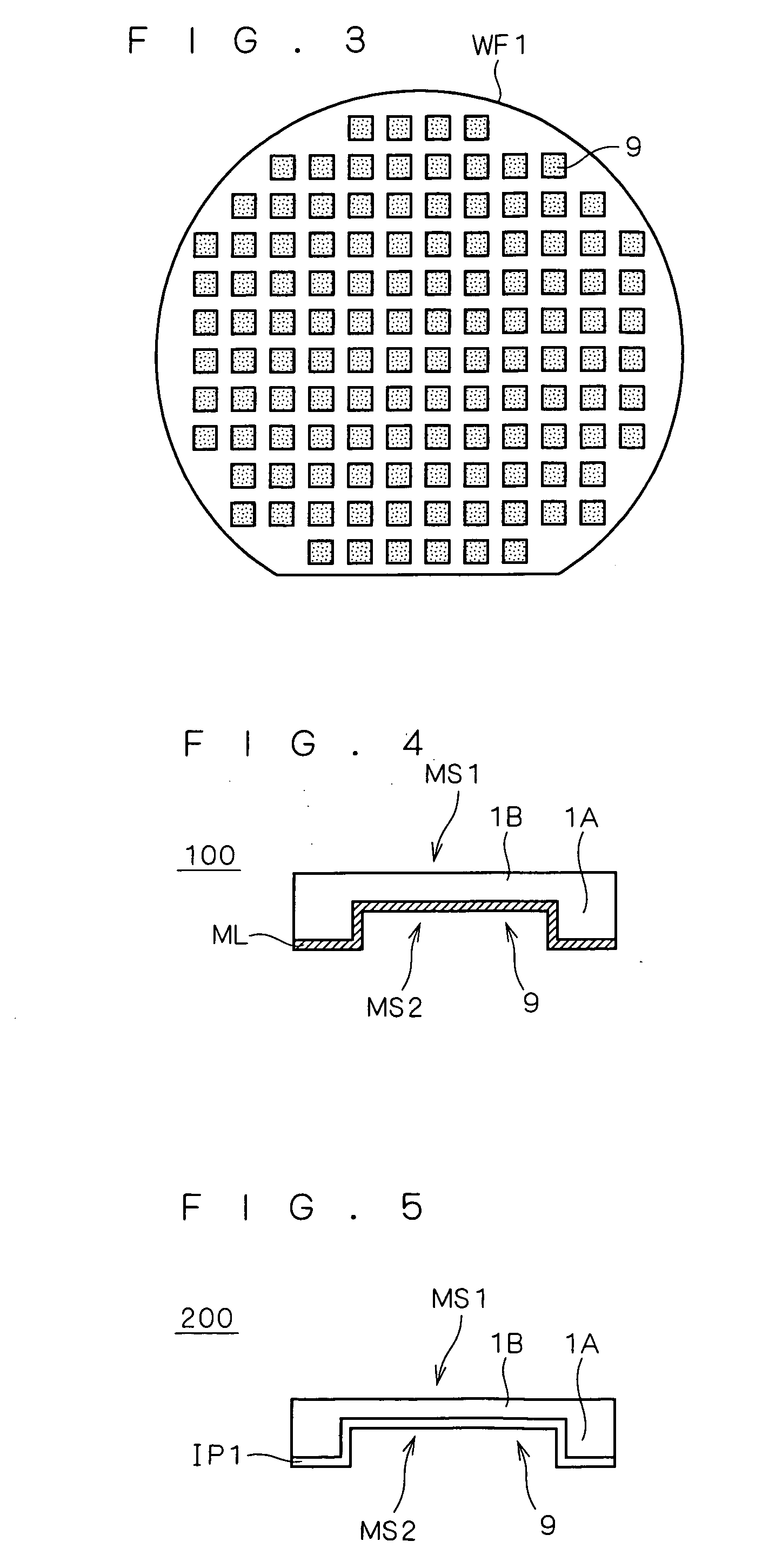Semiconductor device
a semiconductor and device technology, applied in the direction of semiconductor devices, basic electric elements, electrical appliances, etc., can solve the problems of increased power dissipation, deterioration of performance, and large inconvenience, and achieve satisfactory mechanical strength of semiconductor substrates, performance and breakdown voltage.
- Summary
- Abstract
- Description
- Claims
- Application Information
AI Technical Summary
Benefits of technology
Problems solved by technology
Method used
Image
Examples
first modification
L. FIRST MODIFICATION
[0198] The semiconductor devices 700 and 700A of the seventh preferred embodiment have shown structures in which the N-type semiconductor regions 913 are provided in the surface of the mesa region 8A on the second main surface MS2 side; however, as shown in FIG. 36 as a semiconductor device 700B, P-type semiconductor regions 912a may replace the N-type semiconductor regions 913.
[0199] This structure does not need electrical separation between the P-type collector region 912 and the P-type semiconductor regions 912a, which removes the need for sidewall insulating films on the side surfaces of the recess 9D.
[0200] The semiconductor device 700B has a recess 9D filled with a conductor layer 920 with a common main electrode 916 lying over the surfaces of both of the P-type semiconductor regions 912a and the conductor layer 920. The common main electrode 916 is connected to the external terminal CT.
[0201] With this structure, when a same positive potential is appli...
second modification
M. SECOND MODIFICATION
[0204] In the semiconductor devices 700 and 700A of the seventh preferred embodiment, N-type semiconductor regions 913 are provided in the surface of the mesa region 8A on the second main surface MS2 side; however, as shown in FIG. 37 as a semiconductor device 700C, P-type semiconductor regions 912a may replace the N-type semiconductor regions 913, with P-type semiconductor regions 912b formed in the surface of the N-type semiconductor substrate 8 in the portions defining the sides of the recess 9D, where the P-type collector region 912 and the P-type semiconductor regions 912a are thus electrically connected through the P-type semiconductor regions 912b.
[0205] Also in the semiconductor device 700C, the recess 9D is filled with a conductive layer 920 and a common main electrode 916 is disposed over the surfaces of the P-type semiconductor regions 912a and the conductor layer 920. The common main electrode 916 is connected to the external terminal CT.
[0206] Wi...
PUM
 Login to View More
Login to View More Abstract
Description
Claims
Application Information
 Login to View More
Login to View More - R&D
- Intellectual Property
- Life Sciences
- Materials
- Tech Scout
- Unparalleled Data Quality
- Higher Quality Content
- 60% Fewer Hallucinations
Browse by: Latest US Patents, China's latest patents, Technical Efficacy Thesaurus, Application Domain, Technology Topic, Popular Technical Reports.
© 2025 PatSnap. All rights reserved.Legal|Privacy policy|Modern Slavery Act Transparency Statement|Sitemap|About US| Contact US: help@patsnap.com



